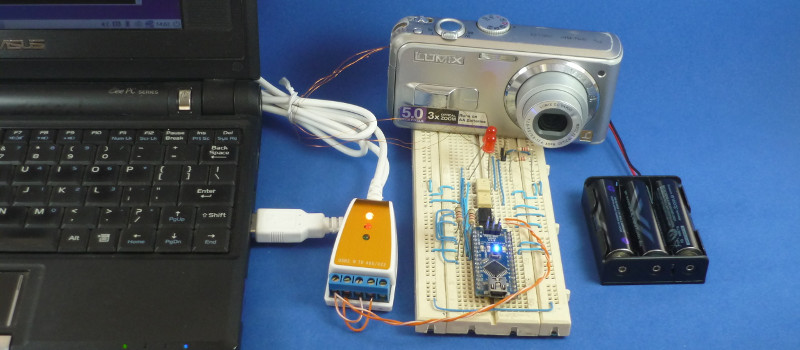Industrial hardware needs to be reliable, tough, and interoperable. For this reason, there are a series of standards used for command & control connections between equipment. One of the more widespread standards is ModBus, an open protocol using a master-slave architecture, usually delivered over RS-485 serial. It’s readily found being used with PLCs, HMIs, VFDs, and all manner of other industrial equipment that comes with a TLA (three letter acronym).
[Absolutelyautomation] decided to leverage ModBus to control garden variety digital cameras, of the type found cluttering up drawers now that smartphones have come so far. This involves getting old-school, by simply soldering wires to the buttons of the camera, and using an Arduino Nano to control the camera while talking to the ModBus network.
This system could prove handy for integrating a camera into an industrial production process to monitor for faults or defective parts. The article demonstrates simple control of the camera with off-the-shelf commercial PLC hardware. Generally, industrial cameras are very expensive, so this hack may be useful where there isn’t the budget for a proper solution. Will it stand up to industrial conditions for 10 years without missing a beat? No, but it could definitely save the day in the short term for a throwaway price. One shortfall is that the camera as installed will only save pictures to its local memory card. There’s a lot to be said for serving the images right to the engineer’s desk over a network.
We’ve seen [Absolutelyautomation]’s work before – check out this implementation of Pong on an industrial controller.
















Straight to desk? That’s what Eyefi and cousins are for! Modbus may not be the most time-sensitive protocol, but it can be pretty darn good at that and this setup keeps the control net separate from a more generic interface.
Any modbus goes over just about anything.
The way wifi sd cards often double-mount FAT filesystems is ASKING for corruption. Turns out just about the only thing transcend sd cards are good for is running firefox…
Took my tooth are not
I would say the person had a little too much fun with this one. For myself, the digital camera I thought of has a shutter who supports the classic mechanical shutter release widget. Of course its hardware is only supported on Windows 98SE that I know of……
If you install a Toshiba Flash Air SD card in the camera, the pictures can be accessed via WiFi so you can get them to the engineer’s desk. I use one in my Deltaprintr and it is great.
http://www.cultofmac.com/242043/toshiba-flashair-promising-but-ultimately-flawed-review/
Cool idea. I was thinking of making an interface using ATTiny or similar for doing time-lapse with old cameras.
This is a completely trivial application of toggling an “arduino” i/o pin with the modbus protocol.
It does remind me however of a project to take complete control over your (canon?) camera by booting from a SD card with the right firmware. That was (is) a cool project…
Thinking of buying some 2nd hand cameras before they go completely obsolete.